Vetiver, known as Chrysopogon zizanioides, is a perennial grass originally from India, now popular in tropical and subtropical areas. It is known for its deep roots, vetiver is excellent for erosion control and thrives under hot conditions. Back in 2008, we recognized that our local area, Cazale, could greatly benefit from this plant due to its soil stabilization properties.
At that time, vetiver was not available locally, so we ventured to a neighboring village, which was quite a trek. We used a donkey to transport the vetiver starts back to Cazale. Upon returning, we, the GVADK (Community Development group), began planting it. We believed that this grass would not only help in controlling erosion but also bring substantial benefits to the local farmers by improving the soil and preventing land degradation. When planted well the roots link themselves together to help hold the soil in place.



We began by incorporating vetiver starts into our tree nursery, which already housed a variety of young trees. Vetiver was chosen for its strong erosion-control capabilities, while the various trees were selected to enhance the area and adapt well to our regional climate.
Introducing vetiver was strategic, aimed at leveraging its deep, root system to stabilize the soil and reduce erosion. As these plants grew, our nursery was becoming a place for reforestation and land stabilization projects. This project not only improved the local landscape but also fostered community engagement and environmental responsibility.
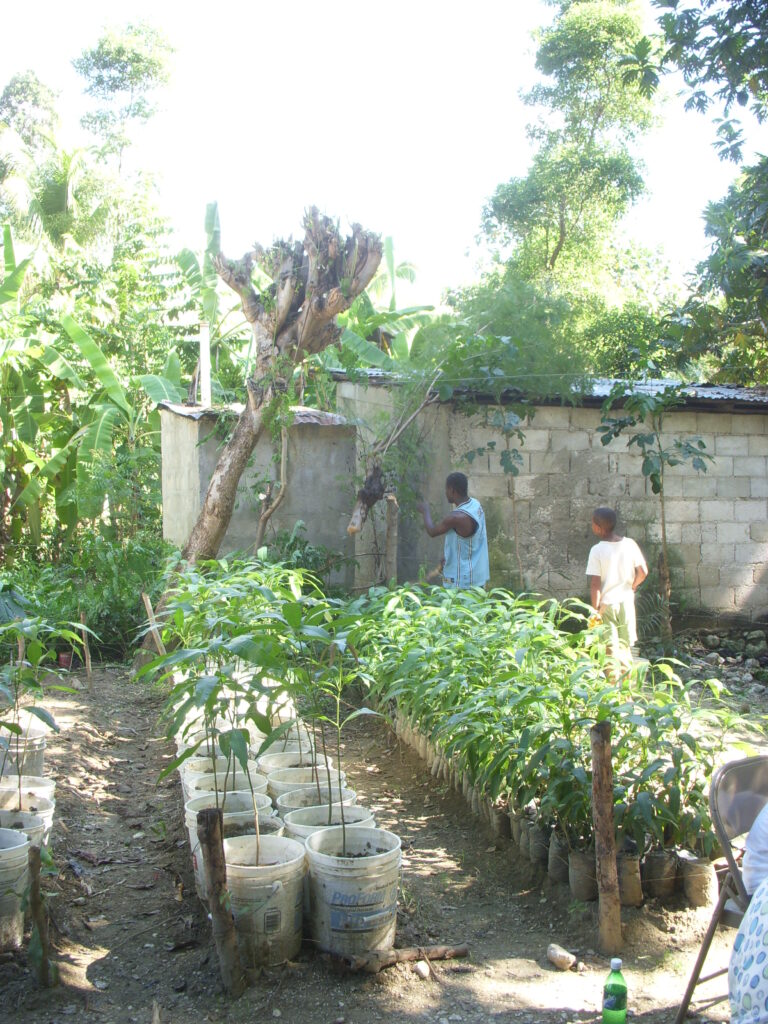

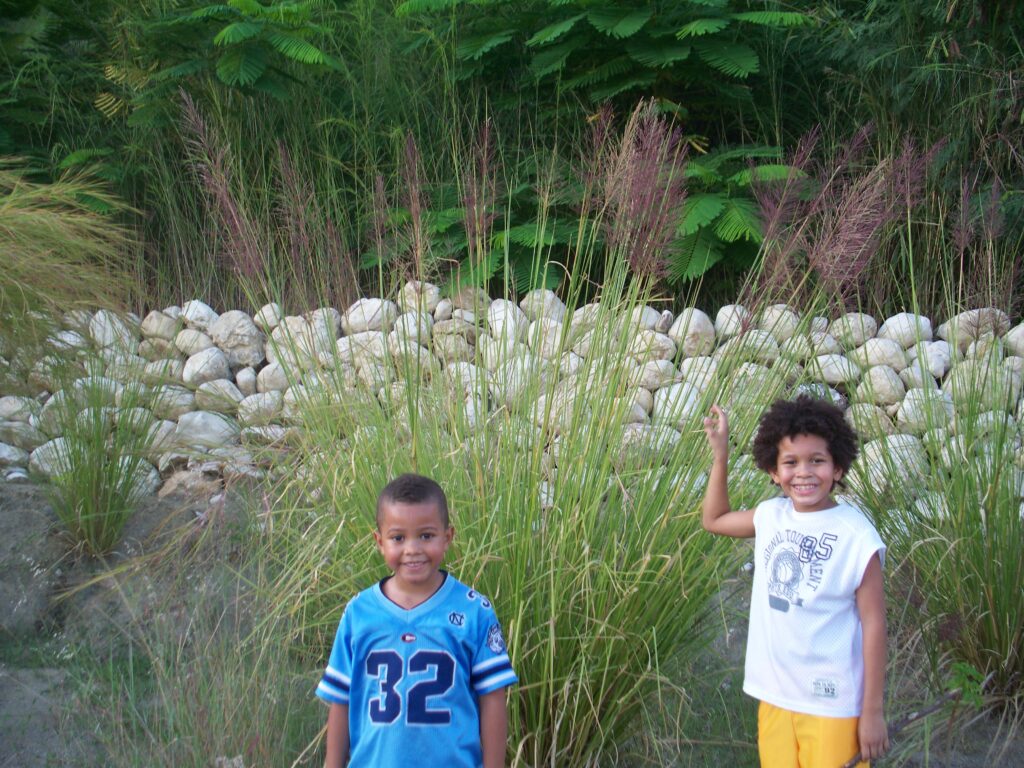

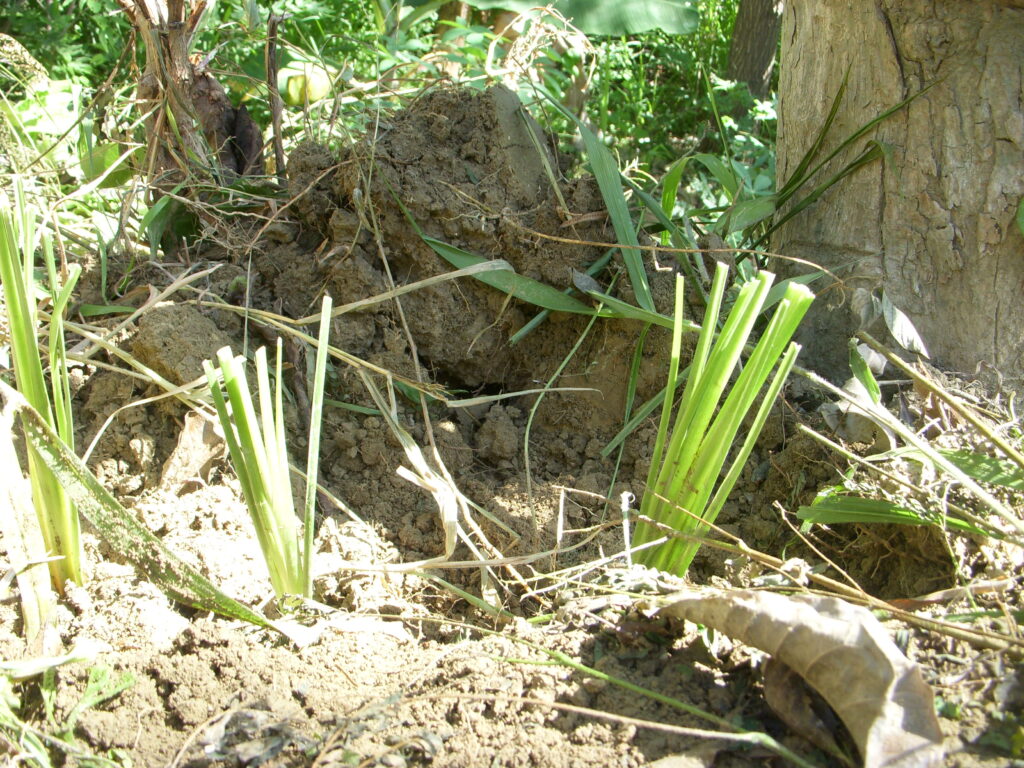
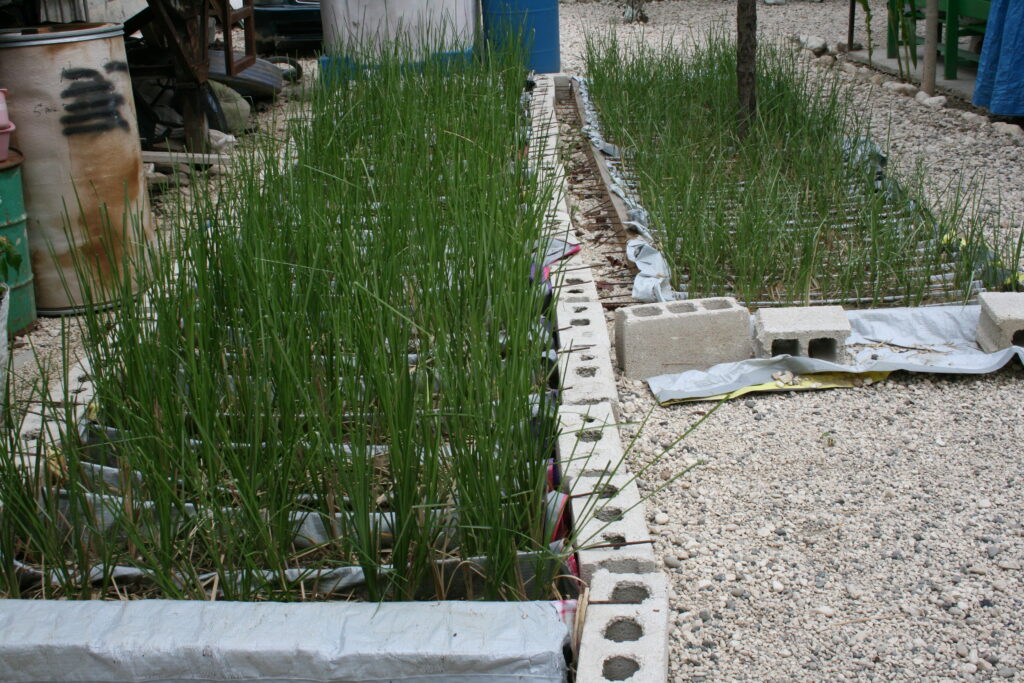

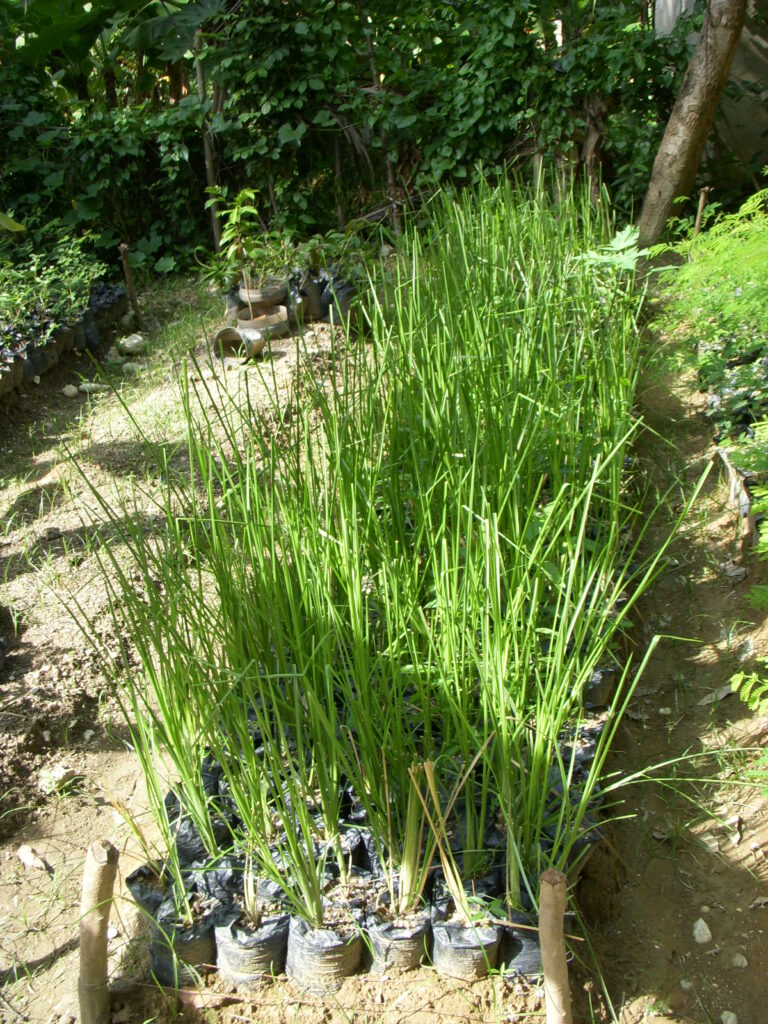
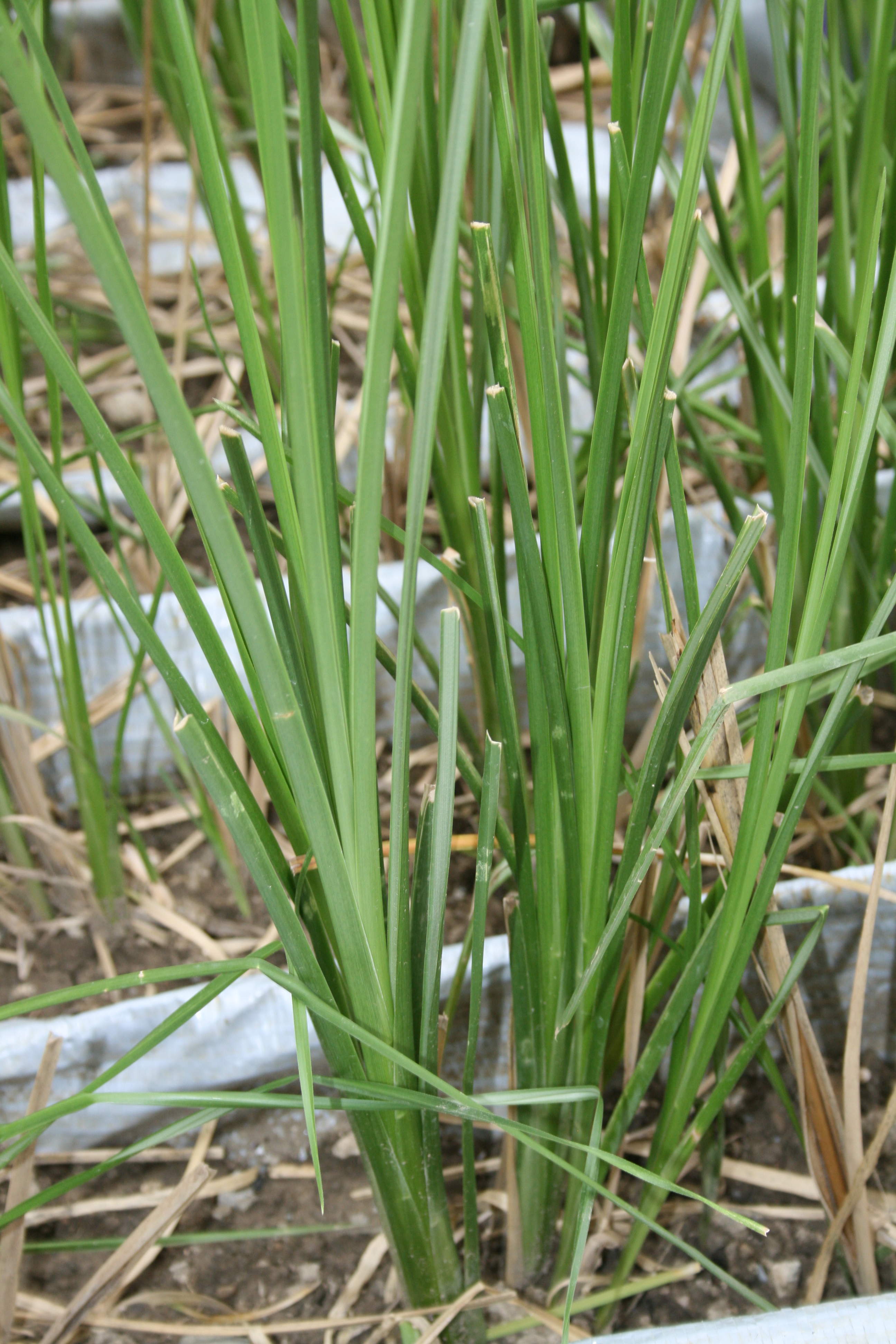
We implemented a system of contour planting on a specific hillside using an A-frame level to ensure precise alignment with the land’s natural contours. The A-frame, a simple device formed by two wooden legs connected to create an ‘A’ shape with a plumb line hanging from the apex, is crucial for this method. To begin, we placed the A-frame on the hillside, adjusting its position until the plumb line indicated that the legs were level. This point was marked on the ground. We then moved the A-frame along the slope, repeating the process, ensuring each new position was level with the last. This technique allowed us to accurately trace contour lines across the hillside. After marking these lines, we planted along the lines. Planting along contours helps reduce water runoff and soil erosion by slowing the flow of water and increasing absorption. This method not only stabilizes the soil and enhances water conservation but also supports healthier plant growth by maintaining essential soil nutrients.
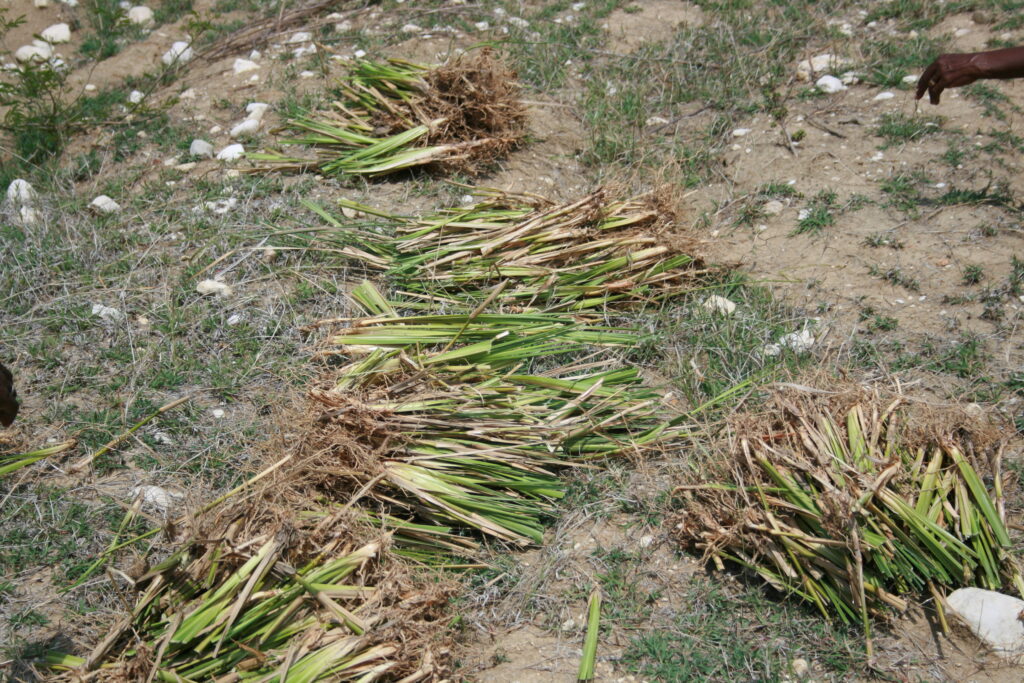
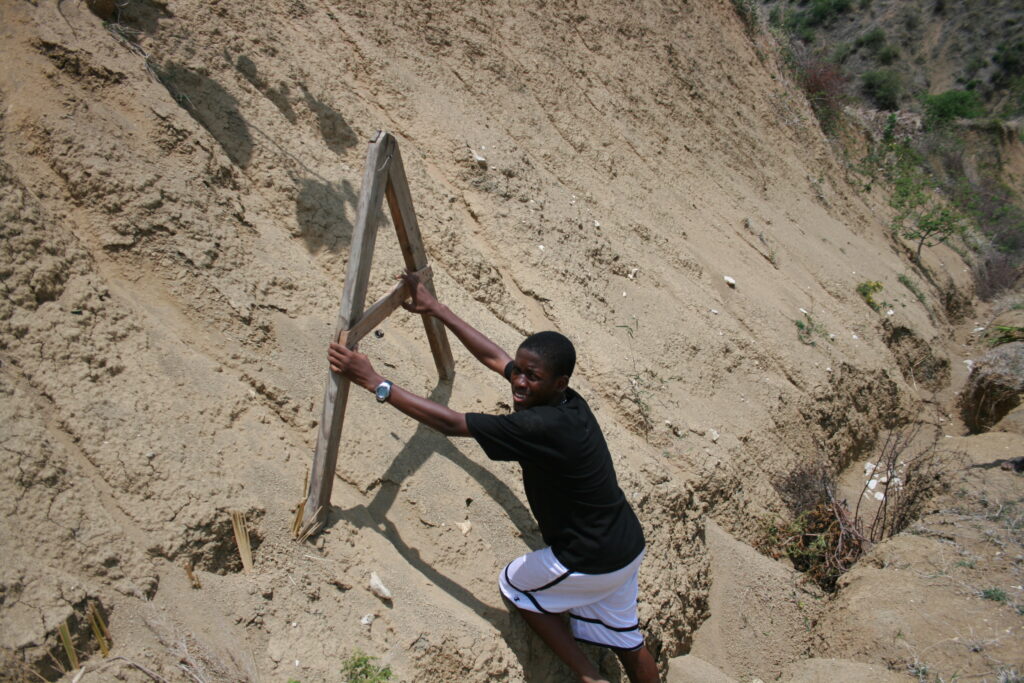
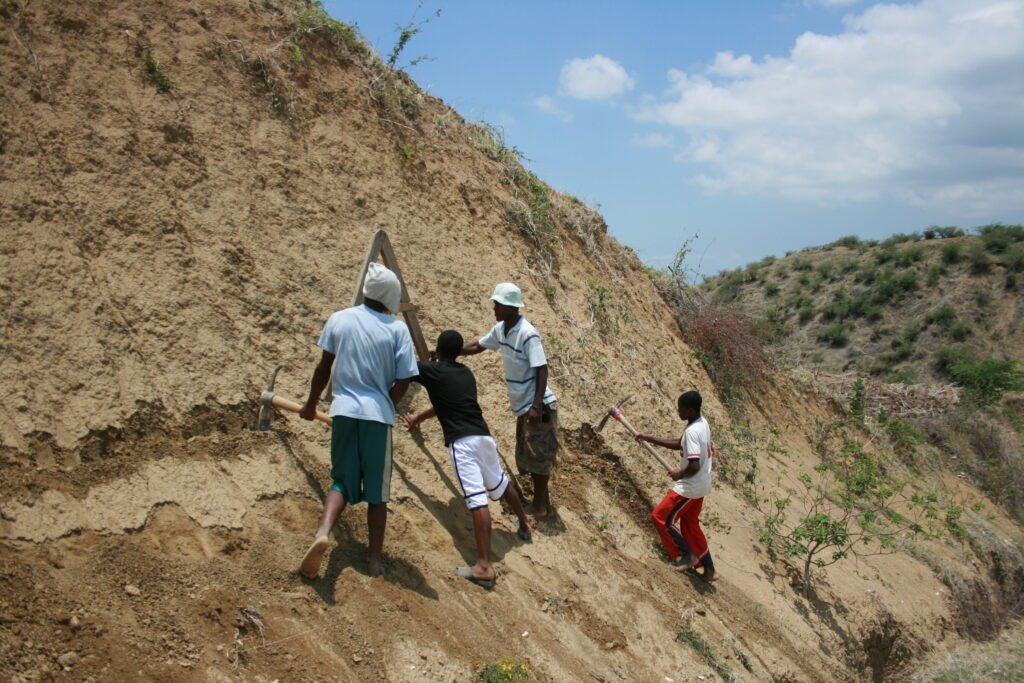

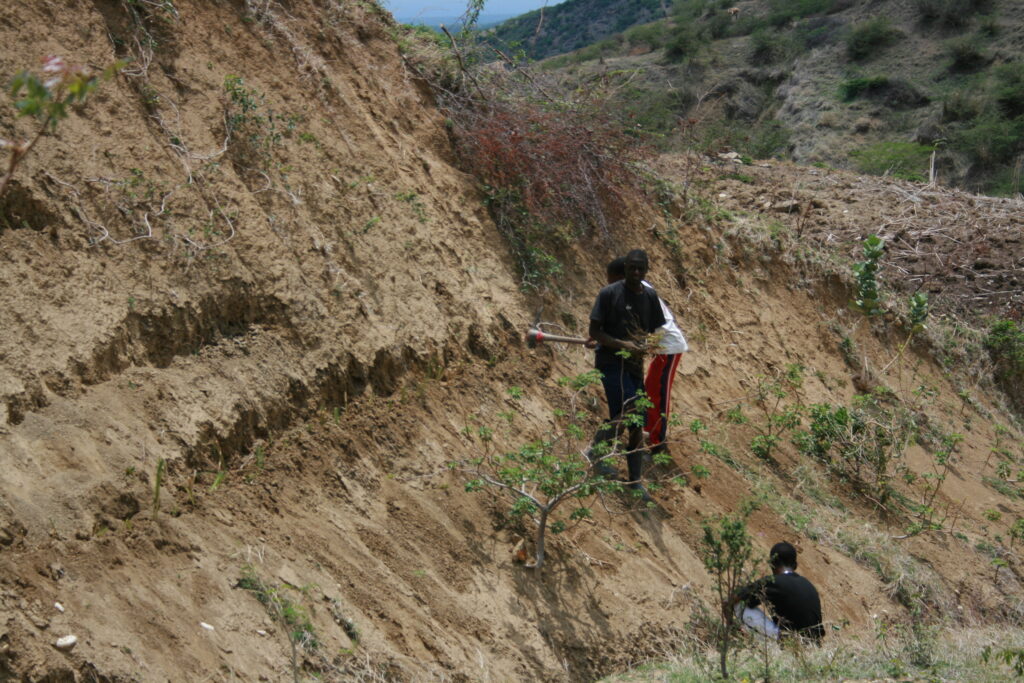
Using vetiver and the contour planting method has proven highly effective in stabilizing the side of the mountains adn hills in our area. After 16 years, the transformation in one area is remarkable. (see progression picture below). The contour lines, initially marked and planted with vetiver and other trees, have matured into dense, barriers that effectively control erosion and water runoff. The vetiver’s deep roots, known for their soil-binding capabilities, have grown extensively, anchoring the soil and significantly reducing the loss of topsoil during heavy rains. This sustainable approach has not only preserved the mountain’s side but also transformed it into a lush, green environment. It is a reminder to us that nature-based solutions can result in long-term environmental benefits, and is very cost effective.


